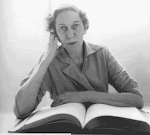As Tribune-Review staff writer, Tony LaRussa, stated in class last Friday, any type of writing demands that we tell a story. Such a philosophy requires each of us, as writers, to take on a unique perspective, to gather details, facts, or other bits of evidence that help us to develop and sharpen the lens through which we view the world, a piece of literature, a specific platform for debate, or another object or person. It is one thing to report; it is another to take on the role of story teller, of taking details to build a narrative that relays a unique message to a specific audience. LaRussa explained to us that our task as writers is to delve the surface, to “forget yourself”, and essentially—as Welty suggested—put on the lens of distant observer.
One way to do this is to assume a persona, that is, a voice or character representing someone or something who/that is other than oneself. It is a way, as LaRussa says, to “forget yourself”. That said, I call to mind Sufjan Stevens, whose songs take on the nature of a persona poem, giving us a good sense of what story-telling is all about: keen observation, an eye for subtle detail, and an understanding of what is hidden below the surface.
To be more explicit, a persona poem is a poem written in the first person, in which a writer imagines he is an animal, an object, a famous person - anyone he is not (http://www.villagewriter.com/):
The Greek word "persona" means mask. In dramatic poems that's exactly what the writer does, he or she dons a mask and writes from another person's point of view. Even in poems which use "I" as a narrator, writers often represent another person's thoughts or feelings. Persona poems allow you to stretch your style and allow you to attribute emotions and feelings from a less vulnerable perspective. Remember that the narrator guides your reader through the poem.
Questions to ask yourself when writing a persona poem
What is its world like?
What might it see?
What might it hear?
What might it do? (Or a person do to it?)
What does it know?
What might it feel or think?
Closely entwined with the speaker of a poem is the poem's sense of place. The physical world with its sights, smells, and sounds should be more than a backdrop for your poetry. It should be specific, detailed, and central to the thrust of your poem. Your persona character must be shaped by the physical reality and culture of a specific place. Yeats said that a poet's words have "to be wedded to the natural figures of his or her native landscape."
Also, diction (the choice of words, the way words are strung together) becomes a vital element in persona poems. Make sure that your language is language that your character would have used, or at least will appear authentic to the reader. In other words don't write a dramatic monologue about Queen Elizabeth and intersperse slang by Madonna.
Remember to choose if possible, a critical moment in the historical figure's life. Also, use details: clothing, fashion, and objects of the time period.
Here's a simple example. These are the mummy's words from "The Mummy's Smile" by Shelby K. Irons:
Blessed Amon-Ra!
I still remember the sun on my bones.
I ate pomegranates and barley cakes.
I wore a necklace of purple stones.
And sometimes I saw a crocodileSlither silently into the Nile.
Blessed Osiris!
Now I only feel cold light beneath the glass.
Now I eat the words of children passing by.
Now I wear the decay of time preserved.
And sometimes I see two lovers
embracebehind the column next to the E X I T sign.
The first stanza focuses on sensory impressions, and all the details accurately describe things this mummy might have actually experienced when she was alive.
The above information, taken from http://www.villagewriter.com/, explains the general construction of a persona poem. As discussed in class, Sufjan Stevens does well to fulfill such requirements.
+++
That said, I would like you to do the following for individual presentations that will begin on Tuesday, November 18, 2008:
1. Find a music artist or poet who you enjoy that flexes the style of a persona poem in his or her catalogue of music or poetry.
2. Write a feature on that particular artist in which you review either a series of songs, poems, or an album or book of poetry—a la pitchforkmedia. The review should be at least five paragraphs in length and will require you to give a bit of personal/professional history of the artist as well as both description and interpretation of at least three of his or her songs or poems that take on the nature of a persona piece. Again, refer to http://www.pitchforkmedia.com/ or the album reviews that I gave you in the Stevens fun pack to understand and imitate the format of a review.
(25 pts)
3. Lastly, write an at least three stanza persona poem of five lines per stanza in which you take on the perspective of someone or something else. Include a moment of grace, or insight/revelation, which should be part of the concluding verse of the poem.
(15 pts)
4. You will have to present both your review as well as your persona poem in class starting Tuesday, November 18, 2008. I will collect all written materials via the blog or by hard copy on said day. We will present in alphabetical order.
(5 pts)
Total: 45 pts
